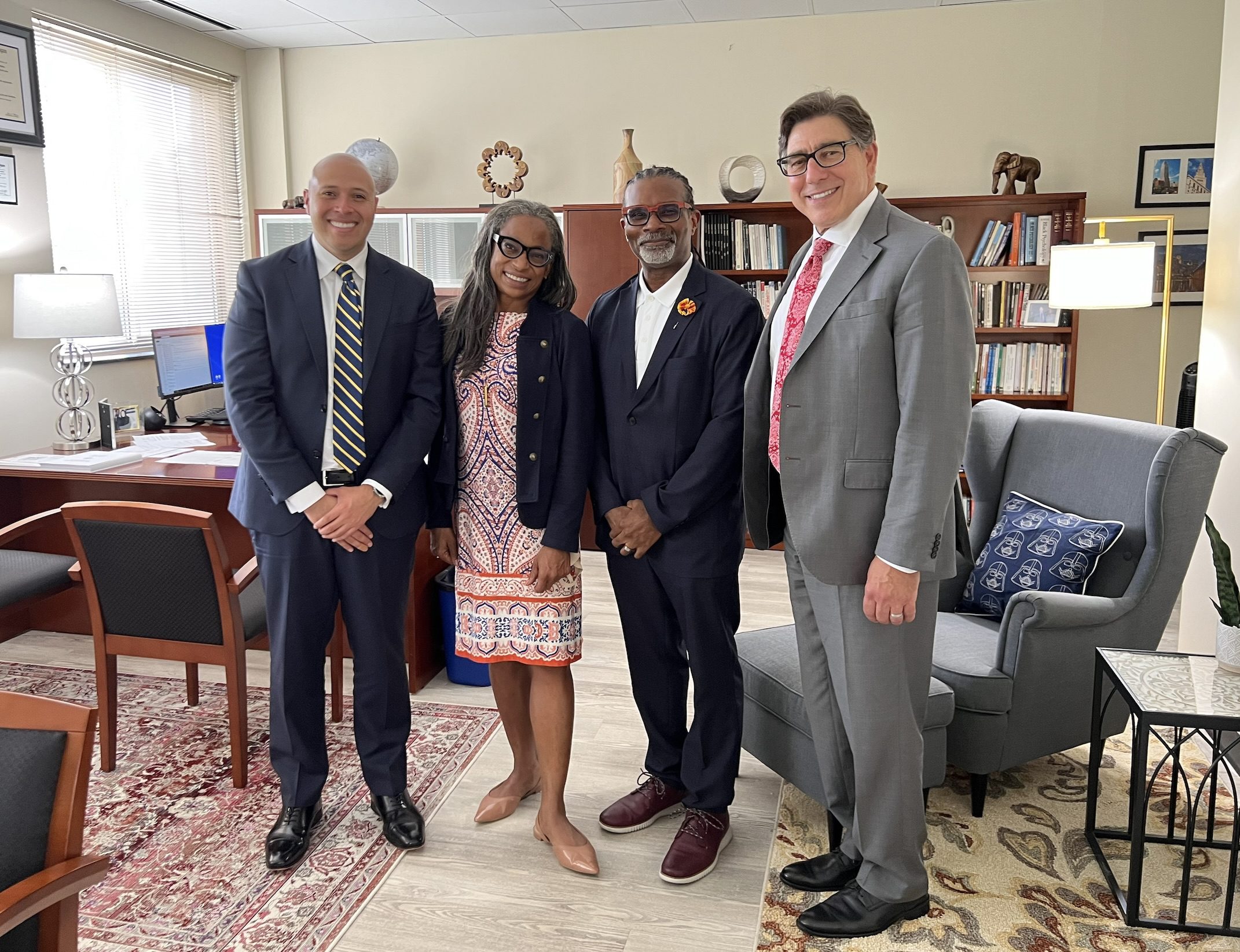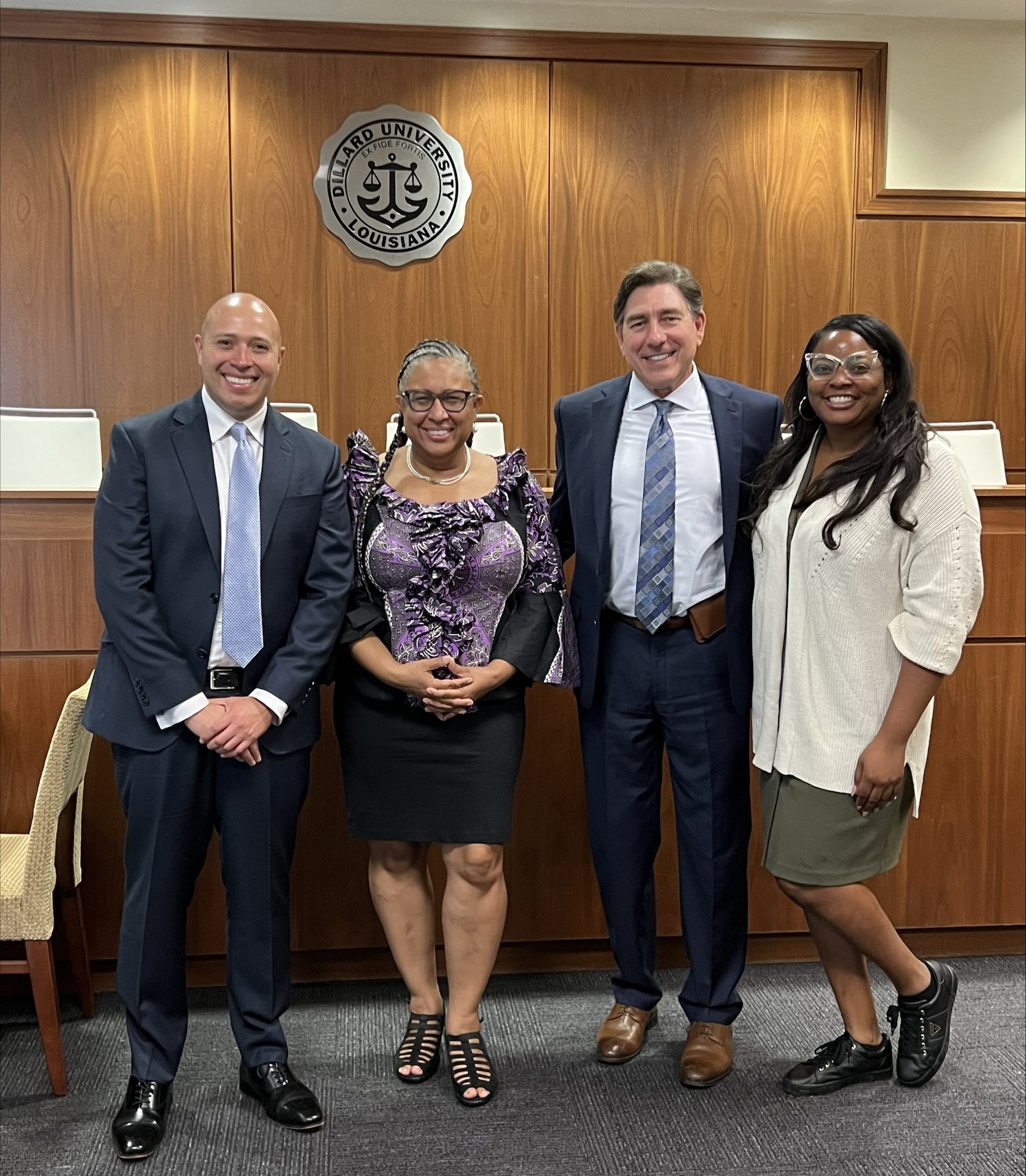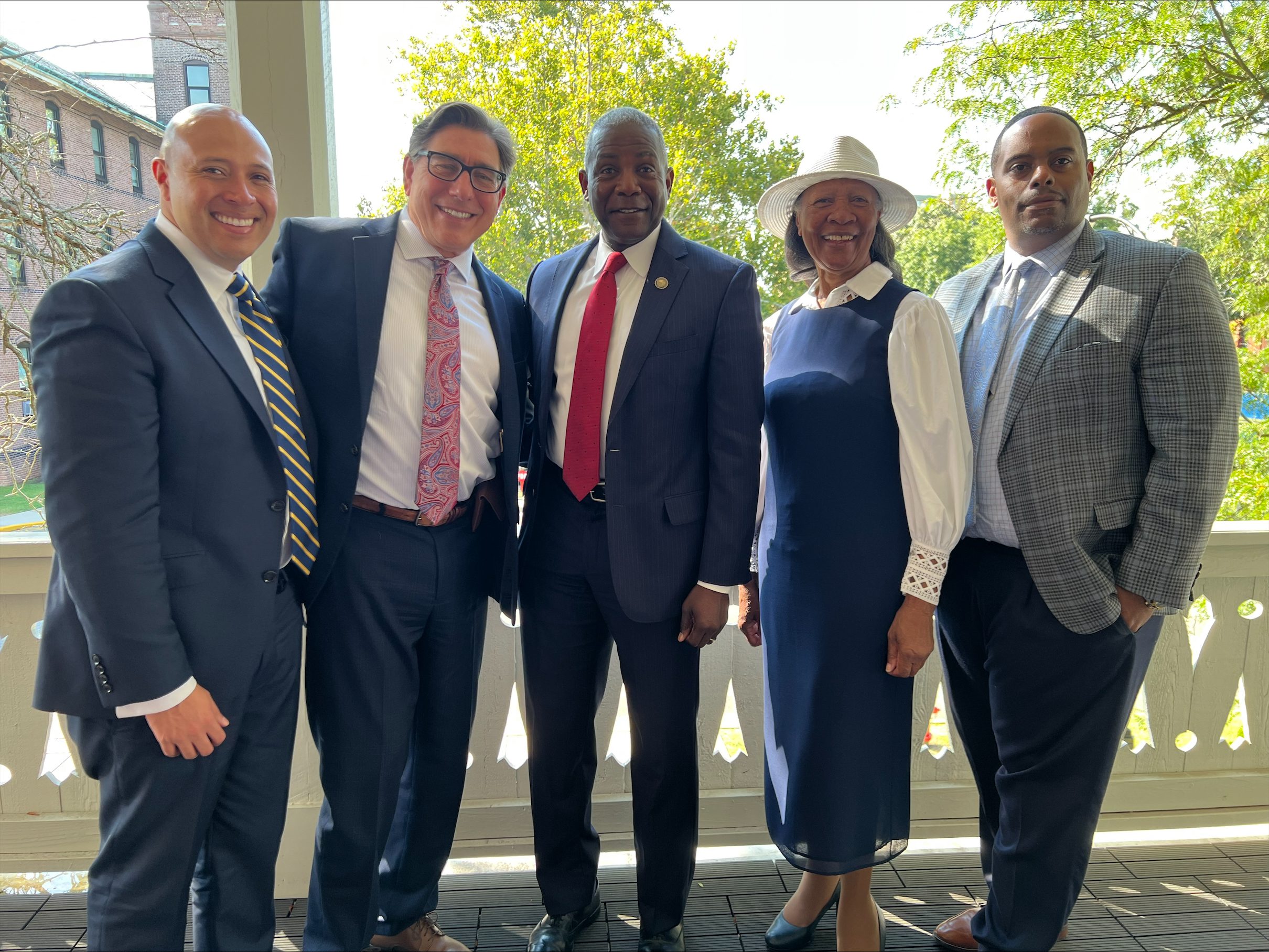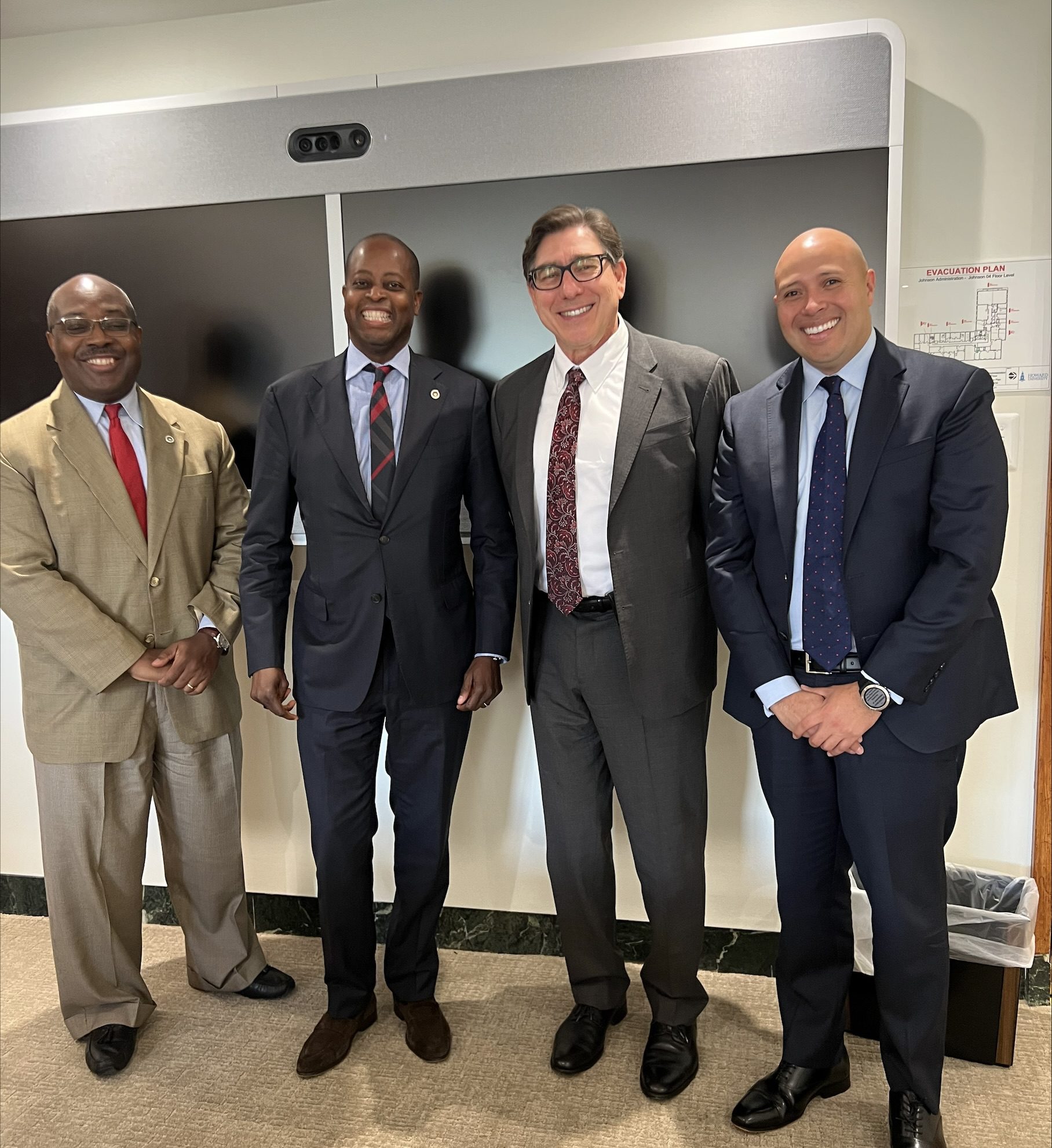UC Law SF Leaders Look to Boost Student Diversity with HBCU Tour

UC Law SF Chief Diversity Officer Mario E. Lopez (left) and Chancellor & Dean David Faigman (right) met with Moorehouse College Professor Adrienne Jones (center left) and Provost Kendrick Brown (center right) in Atlanta.
To help further bolster the law school’s already diverse student body, two UC Law SF leaders recently spent a full week crisscrossing the Gulf and East Coasts to visit five Historically Black Colleges and Universities (HBCUs).

Mario E. Lopez (left) and David Faigman (center right) met with Dillard University President Rochelle L. Ford (center left) and Pre-Law Advisor De’Jonique Carter (right) in New Orleans.
UC Law SF Chancellor & Dean David Faigman and Chief Diversity Officer Mario Ernesto Lopez ’15 paid visits to leaders at five HCBUs in three states and Washington D.C. this fall. The goal was to establish and strengthen relationships with those institutions and inform them about scholarships and other programs available at UC Law SF.
“We were thrilled to meet with the leaders of these extraordinary institutions and share information on the many programs we have at UC Law SF to help HBCU students succeed in law school and beyond” Faigman said.
Faigman and Lopez met with the presidents and provosts of five colleges, including Dillard University in New Orleans; Spelman College and Moorehouse College in Atlanta; Hampton University in Hampton, Va.; and Howard University in Washington D.C.
Among the topics they discussed was UC Law SF’s California Scholars Program, which enrolls and financially supports students who graduated from a California high school and attended an HBCU or the American University in Armenia. Launched in 2018, the program covers full tuition costs for those students and provides a stipend for living expenses.

Appearing from left to right are Mario E. Lopez and David Faigman with Hampton University President Darrell K. Williams, Provost and Chancellor JoAnn Haysbert, and Director of Pre-Law Institute & Assistant Professor Damien L. Bevelle in Hampton, Virginia.
“This was a great opportunity for the Chancellor & Dean to meet with HBCU presidents and leadership about the amazing opportunities we have here at UC Law SF for HBCU grads,” Lopez said.
They also spoke about UC Law SF’s 54-year-old Legal Education Opportunity Program (LEOP), which provides academic support and resources for UC Law SF students who have overcome disadvantage. Another important topic discussed was the First Generation Program, which supports students who are the first in their families to attend college. Although not all HBCU graduates have backgrounds relevant to these programs, they are signature programs that help ensure a diverse cohort of students access law school.

Appearing from left to right are Howard University Provost & Chief Academic Officer Anthony K. Wutoh and former Howard University President Wayne A.I. Frederick with David Faigman and Mario E. Lopez in Washington D.C.
Lopez said he received positive feedback from the HBCU leaders that he and Faigman met during their weeklong trip.
“The leaders were excited to hear about our programs and ways to work together more strategically to create pipelines and opportunities for undergraduate students to go to law school,” Lopez said.
The California Scholars Program has been particularly successful for UC Law SF, having attracted a strong contingent of students from HBCUs who have excelled in law school over the last five years, according to Lopez.
“It has given us an opportunity to reach out to schools that in the past we didn’t have as much of a presence in,” he said.
The Class of 2026 was one of the most diverse in UC Law SF’s history, thanks to many initiatives aimed at boosting student diversity. Lopez said a diverse student body makes the UC Law SF community stronger.
“Our students learn more and have a better learning environment when they are exposed to different viewpoints and life experiences,” he said. “It also helps make the legal profession reflect the diversity of the population.”